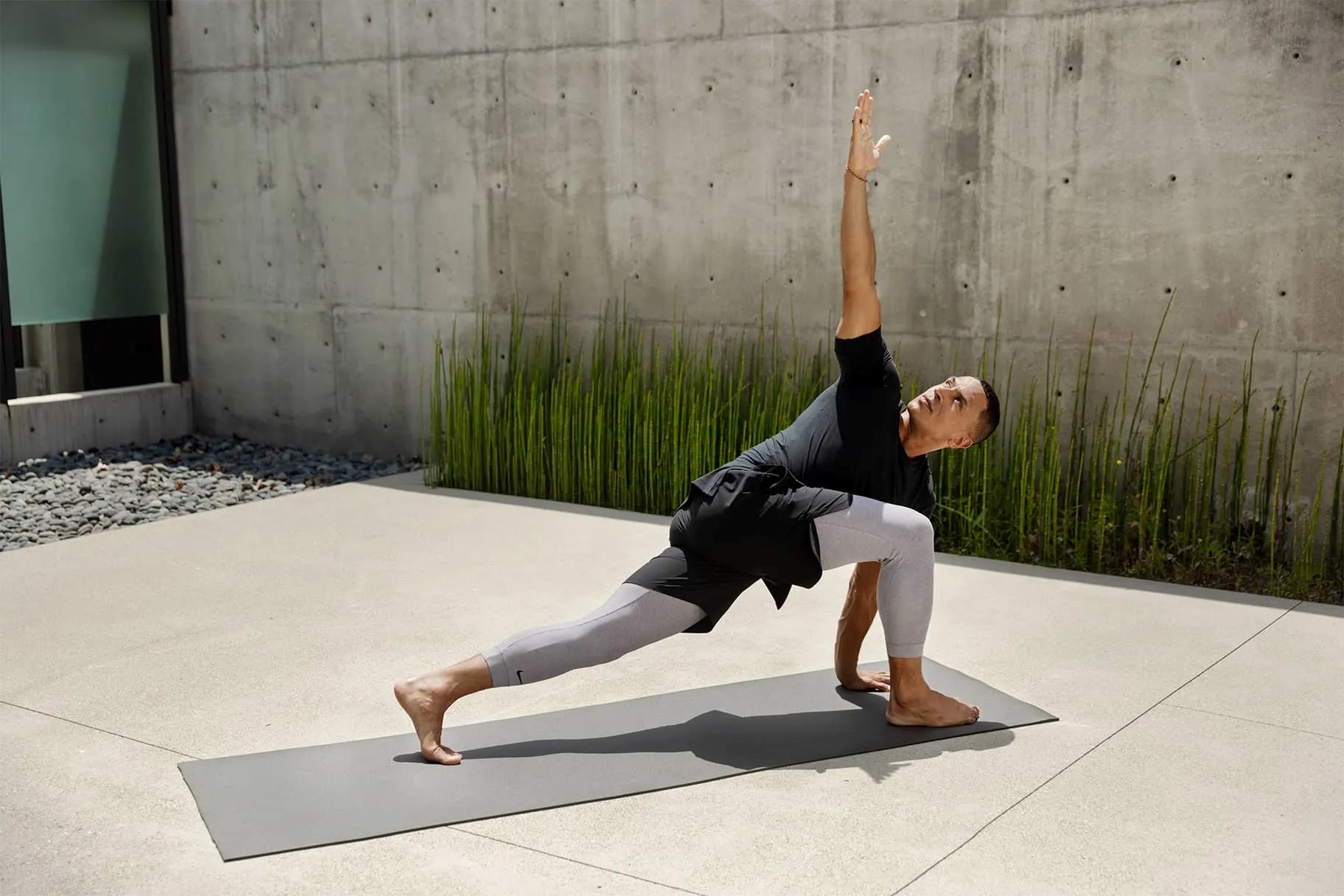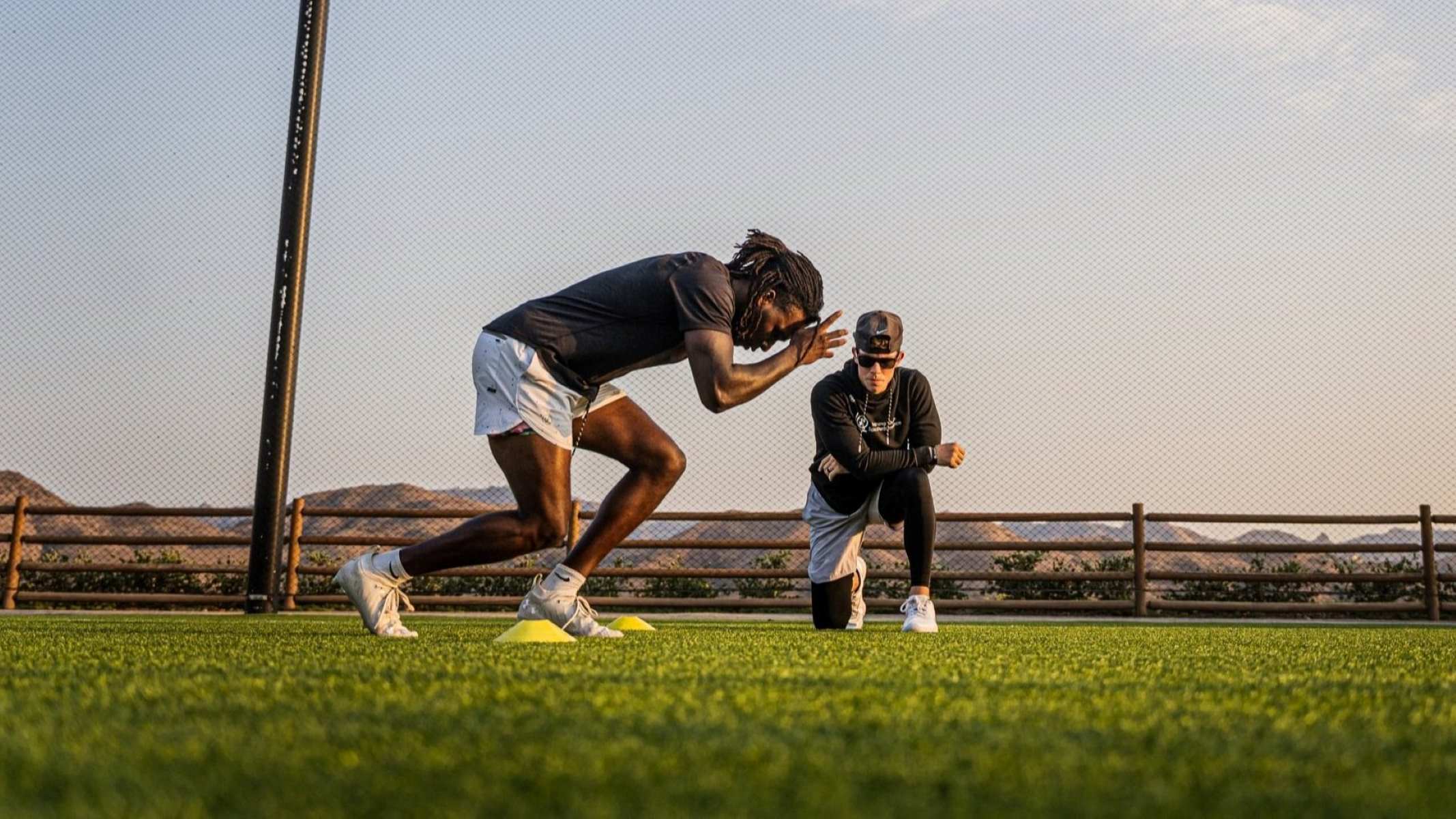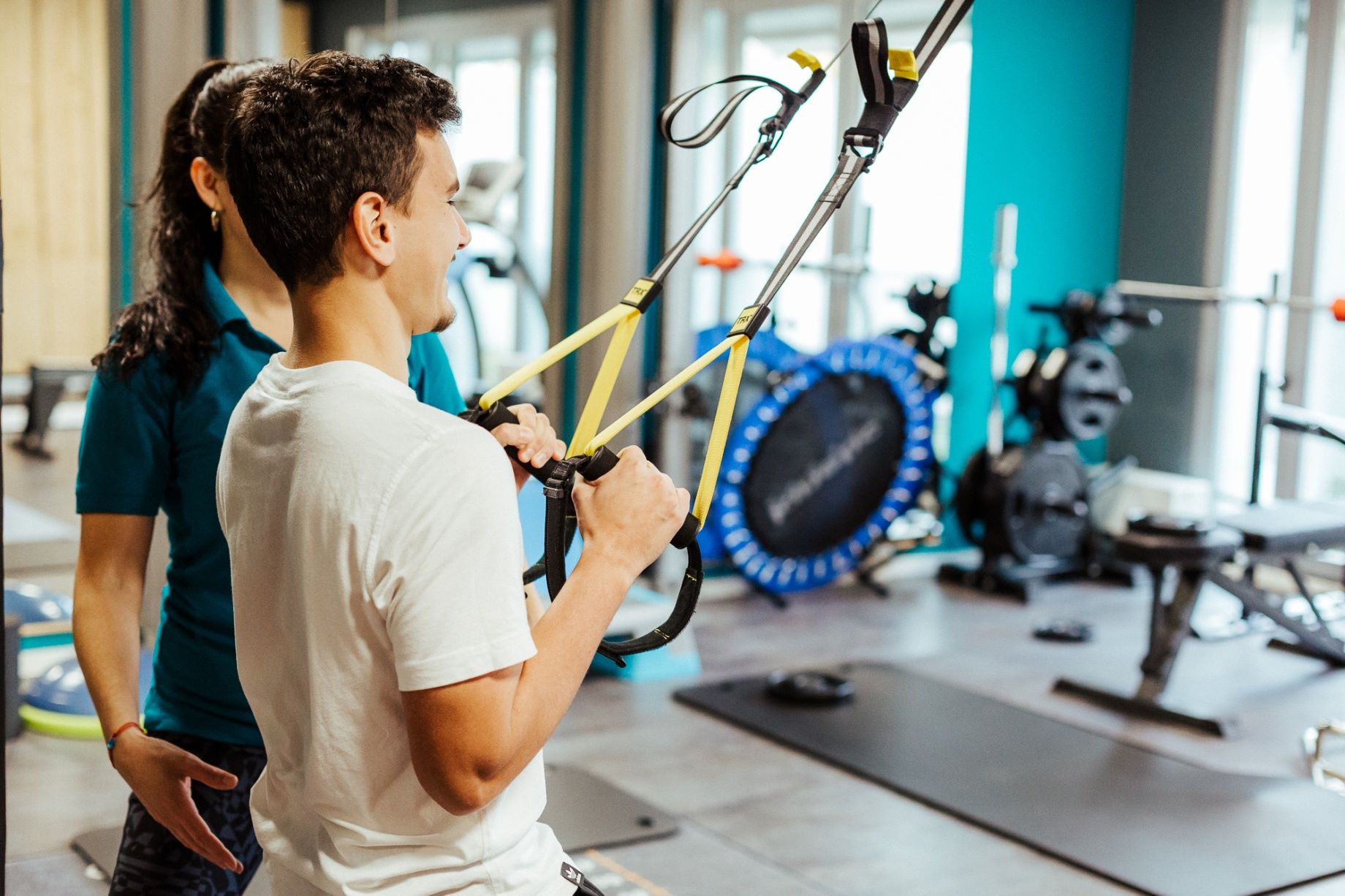Home>Misc>Featured>How Can Flexibility Improve Athletic Performance?


Featured
How Can Flexibility Improve Athletic Performance?
Modified: March 1, 2024
Discover the power of flexibility for enhanced athletic performance. Our featured article explores how flexibility training can elevate your game and prevent injuries.
Introduction
Flexibility plays a crucial role in athletic performance, enhancing range of motion, preventing injuries, and improving speed, power, and agility. Athletes, regardless of their sport, can benefit from incorporating flexibility training into their routine. Whether you’re a runner, a basketball player, a weightlifter, or a dancer, developing and maintaining flexibility can take your performance to the next level.
Flexibility refers to the ability of your muscles and joints to move through their full range of motion. It is influenced by factors such as genetics, age, and physical activity. While some individuals naturally possess more flexibility than others, it is a trainable attribute that can be improved with the right exercises and techniques.
One of the key benefits of flexibility for athletes is increased range of motion. When your muscles are flexible, they can elongate and contract more easily, allowing you to execute movements with a greater degree of freedom. This can be particularly advantageous in sports that require fluid and dynamic movements, such as gymnastics, martial arts, and dance.
Another significant advantage of incorporating flexibility training into an athletic routine is injury prevention. Muscles that are tight and inflexible are more susceptible to strains, sprains, and tears. By increasing your flexibility, you can reduce the risk of such injuries, as well as improve your overall athletic performance.
Furthermore, flexibility plays a vital role in sports rehabilitation. After an injury, regaining and improving flexibility is essential for restoring normal function and preventing future incidents. Flexibility exercises can help increase blood flow, promote healing, and enhance joint mobility, aiding in the recovery process.
With these benefits in mind, it is clear that flexibility training is a vital component of any athlete’s routine. In the following sections, we will explore the various ways in which flexibility can improve specific aspects of athletic performance, and provide tips and techniques for incorporating flexibility training effectively.
The Benefits of Flexibility for Athletic Performance
Flexibility is a valuable asset for athletes in various ways. By improving flexibility, athletes can enhance their overall performance and achieve better results in their respective sports. Let’s take a closer look at the specific benefits of flexibility in athletic performance:
- Improved Range of Motion: Flexibility training helps athletes increase their range of motion, allowing them to achieve greater joint movement and execute movements more efficiently. This increased range of motion can enhance performance in sports like gymnastics, martial arts, and dance, where fluid and extensive movements are required.
- Enhanced Injury Prevention: Flexible muscles and joints are more resilient and less prone to injuries. By incorporating regular flexibility exercises into their routine, athletes can reduce the risk of strains, sprains, and other common sports-related injuries. This is especially important for high-impact sports like soccer, basketball, and football.
- Improved Muscle Function: Flexibility training improves the function and activation of muscles. It helps muscles work more efficiently, leading to improved power output and better overall athletic performance. Flexible muscles are also less likely to experience muscle imbalances, which can negatively impact performance and increase the risk of injuries.
- Increased Speed and Power: Proper flexibility training can significantly improve an athlete’s speed and power. Flexible muscles can contract and extend more efficiently, allowing athletes to generate more force and achieve faster, more explosive movements. This can be particularly beneficial for sprinters, jumpers, and athletes involved in explosive sports like weightlifting.
- Better Posture and Alignment: Flexibility exercises that target the spine, shoulders, and hips can help athletes develop better posture and alignment. Correct alignment improves movement efficiency and reduces the strain on muscles and joints, leading to improved performance and decreased risk of injuries.
Flexibility is not a static attribute that athletes possess; it is something that can be improved through consistent training and dedication. Regular flexibility exercises, such as static stretching, dynamic stretching, and yoga, can help athletes gradually increase their flexibility over time.
By incorporating flexibility training into their overall fitness regimen, athletes can reap the numerous benefits mentioned above. Flexibility is a key component of athletic performance and should not be overlooked. In the following sections, we will explore the various ways in which flexibility can be integrated into an athlete’s training routine to optimize performance and prevent injuries.
The Connection Between Flexibility and Injury Prevention
Flexibility and injury prevention go hand in hand in the world of athletics. Maintaining optimal flexibility plays a crucial role in reducing the risk of injuries for athletes of all levels and disciplines. Let’s delve deeper into the connection between flexibility and injury prevention:
1. Improved Muscle Elasticity: Flexibility training increases the elasticity of muscles, tendons, and connective tissues. This elasticity allows the tissues to withstand stress and strain during physical activity, reducing the likelihood of muscle tears, strains, and sprains.
2. Enhanced Joint Stability: Flexibility exercises help improve the range of motion around joints, contributing to better joint stability. This increased stability can help prevent joint hyperextension, an injury common in sports that involve sudden changes in direction, such as soccer and basketball.
3. Reduced Muscle Imbalances: Imbalances between opposing muscle groups can lead to joint instability and increased injury risk. Flexibility training helps correct these imbalances by stretching tight muscles and strengthening weaker ones, promoting balanced muscle development and reducing the risk of overuse injuries.
4. Improved Body Mechanics: Proper flexibility training optimizes body mechanics, ensuring that athletes move efficiently and with correct form. By maintaining good alignment and posture, athletes are able to distribute forces evenly throughout their body, reducing the strain on specific muscles or joints and minimizing the risk of injury.
5. Injury Rehabilitation and Recovery: Flexibility exercises play a vital role in the rehabilitation and recovery process after an injury. By gradually introducing stretching and mobility exercises, athletes can regain flexibility, restore normal muscle length, and prevent future reinjury.
6. Warm-up and Injury Prevention: Dynamic stretching, which incorporates movement, is particularly effective as part of an athlete’s warm-up routine. This helps increase blood flow to the muscles, raises body temperature, and prepares the body for the demands of physical activity, reducing the risk of muscle strains and other injuries.
It is important to note that flexibility alone may not be sufficient to prevent all types of injuries. Incorporating other elements of fitness, such as strength training, balance exercises, and proper technique, is equally important. By combining flexibility with these components, athletes can create a well-rounded injury prevention strategy.
Regular flexibility training, along with a comprehensive warm-up and cool-down routine, can significantly reduce the risk of injuries and keep athletes performing at their best. In the next section, we will explore effective stretching techniques that athletes can incorporate into their flexibility training regimen.
Improving Range of Motion Through Stretching
Stretching is a fundamental component of flexibility training that focuses on improving an athlete’s range of motion. By incorporating various stretching techniques into their routine, athletes can increase their flexibility and achieve a greater range of motion. Here are some key points to consider when it comes to improving range of motion through stretching:
1. Static Stretching: Static stretching involves holding a stretch for an extended period, typically around 30 seconds. This technique targets specific muscles or muscle groups and helps elongate and relax them. Static stretching is best performed after a workout or as a standalone stretching routine.
2. Dynamic Stretching: Dynamic stretching involves moving parts of your body through a controlled range of motion. These stretches mimic movements used in sports or activities and help warm up the muscles and prepare them for physical activity. Dynamic stretching should be performed before a workout or sports performance.
3. Proprioceptive Neuromuscular Facilitation (PNF): PNF stretching is a more advanced technique that involves a combination of static stretching and muscle contraction. This technique capitalizes on the body’s natural neuromuscular reflexes to increase flexibility. PNF stretching is typically done with a partner or using a resistance band.
4. Active Isolated Stretching: Active isolated stretching (AIS) involves repeated, controlled movements that target specific muscles or muscle groups. It is typically performed in a relaxed state, allowing the muscle being stretched to elongate without triggering a protective stretch reflex. AIS is often used for post-workout recovery and injury prevention.
5. Yoga and Pilates: Yoga and Pilates are popular practices that incorporate stretching, strengthening, and relaxation techniques. These disciplines focus on both static and dynamic stretching, improving overall flexibility and body awareness. Regular participation in yoga or Pilates classes can provide significant benefits for athletes looking to improve their range of motion.
When incorporating stretching into your routine, it is important to follow a few guidelines:
- Warm up your muscles before performing any stretching exercises to increase blood flow and prepare the muscles for stretching.
- Focus on major muscle groups and muscles relevant to your sport or activity.
- Start with gentle stretches and gradually increase the intensity and duration of each stretch over time.
- Avoid bouncing or jerking movements, as this can lead to muscle tears or injury.
- Breathe deeply and relax into each stretch to encourage the muscle to release tension.
- Be consistent and incorporate stretching into your regular training routine to see long-term results.
By incorporating stretching techniques into your flexibility training regimen, you can gradually improve your range of motion and enhance your athletic performance. In the next section, we will discuss effective stretching techniques specifically tailored for athletes.
Effective Stretching Techniques for Athletes
Effective stretching techniques are vital for athletes looking to improve their flexibility and enhance their athletic performance. By incorporating these techniques into their training routine, athletes can maximize the benefits of stretching and improve their overall range of motion. Here are some effective stretching techniques specifically tailored for athletes:
1. Dynamic Stretching: Dynamic stretching involves moving your body through a controlled range of motion. These stretches help warm up the muscles, increase blood flow, and prepare the body for physical activity. Examples of dynamic stretches include walking lunges, high knees, arm circles, and bodyweight squats.
2. Static Stretching: Static stretching is the most common and well-known stretching technique. It involves holding a stretch for a specific period, usually around 30 seconds. Static stretches target specific muscles or muscle groups and help improve flexibility. Examples of static stretches include hamstring stretches, quad stretches, and calf stretches.
3. PNF Stretching: Proprioceptive Neuromuscular Facilitation (PNF) stretching combines static stretching with muscle contraction and relaxation. It is an advanced technique that helps improve range of motion and flexibility. PNF stretching typically involves a partner or a resistance band to apply resistance during contractions and aid in stretching.
4. Active Isolated Stretching: Active isolated stretching (AIS) focuses on specific muscles or muscle groups. It involves repetitive, controlled movements in a relaxed state to lengthen and strengthen the muscles. AIS is often used as a post-workout recovery technique and can help prevent injuries and improve flexibility.
5. Yoga and Pilates: Both yoga and Pilates incorporate a combination of static and dynamic stretching, strengthening exercises, and relaxation techniques. These disciplines improve overall flexibility, core strength, and body awareness. Attending regular yoga or Pilates classes can provide athletes with a well-rounded stretching and conditioning routine.
When performing these stretching techniques, it’s important to keep a few key tips in mind:
- Perform your stretches after a warm-up or physical activity when your muscles are already warmed up.
- Focus on specific muscle groups used in your sport or activity.
- Hold each stretch for at least 20-30 seconds, and repeat each stretch 2-3 times.
- Breathe deeply and relax into each stretch, avoiding any sudden or jerking movements.
- Avoid overstretching or pushing beyond your limit to prevent injury.
- Listen to your body and modify or adapt stretches as needed to accommodate any injuries or limitations.
Consistency is key when it comes to stretching. Incorporate these effective stretching techniques into your regular training routine to gradually improve your flexibility and enhance your athletic performance. In the next section, we will discuss how athletes can incorporate flexibility training into their overall athletic routine.
Incorporating Flexibility Training into an Athletic Routine
Flexibility training should be an integral part of every athlete’s overall training routine. By incorporating specific flexibility exercises and integrating them strategically, athletes can improve their range of motion, prevent injuries, and optimize their performance. Here are some effective ways to incorporate flexibility training into an athletic routine:
1. Pre-Workout Warm-Up: Prior to engaging in any physical activity, it is crucial to warm up your muscles. Include dynamic stretching exercises that target the major muscle groups relevant to your sport or activity. This will increase blood flow, improve joint mobility, and prepare your body for the demands of exercise.
2. Post-Workout Stretching: After your workout, dedicate time to performing static stretches. Focus on the muscles that were most heavily engaged during your training session. This will help relax the muscles, improve muscle tone, and prevent tightness and soreness the next day.
3. Separate Flexibility Sessions: Allocate dedicated time solely for flexibility training. This can be done on rest days or on alternate days from your other training sessions. This approach allows you to focus exclusively on improving your flexibility and addressing any specific areas of tightness or limited range of motion.
4. Incorporate Stretching Breaks: If you have a sedentary job or engage in activities that restrict movement, incorporate short stretching breaks throughout the day. Stand up, perform a few stretches targeting your upper body, lower body, and core, and then resume your tasks. These breaks will help counteract the negative effects of prolonged sitting or limited movement.
5. Combine Flexibility with Other Workouts: Incorporate flexibility exercises within your strength training or cardio workouts. For example, perform active stretches between resistance exercises, or include yoga or Pilates sessions that incorporate both flexibility and strength training. This allows you to optimize your time and work on multiple aspects of fitness simultaneously.
6. Utilize Recovery Days: On your recovery days, focus on passive stretching techniques such as yoga or deep stretching exercises. These sessions can help promote relaxation, reduce muscle soreness, and improve overall flexibility.
Remember, consistency is key. Aim to incorporate flexibility training into your routine at least three times per week, if not more. Gradually increase the intensity and duration of your stretches over time to continue challenging your flexibility limits.
It is important to listen to your body and modify or adapt stretches as needed. Each athlete is unique, so tailor your flexibility training to address your specific needs and limitations. If you’re unsure about the best approach, consider consulting with a qualified trainer or coach who can provide guidance and create a personalized flexibility program for you.
By integrating flexibility training into your athletic routine, you can optimize your performance, reduce the risk of injuries, and enhance your overall fitness level. In the next sections, we will delve into how flexibility benefits specific areas of athletic performance like speed, power, agility, endurance, and sports rehabilitation.
The Role of Flexibility in Enhancing Speed and Power
Flexibility plays a vital role in enhancing an athlete’s speed and power. By improving flexibility, athletes can optimize their muscle function, increase stride length, and generate greater force, ultimately leading to improved speed and power. Let’s explore the specific ways in which flexibility impacts speed and power:
1. Efficient Muscle Activation: Flexible muscles have an increased ability to contract and extend effectively. This improved muscle activation allows athletes to generate more power and explosive movements, resulting in faster sprints, jumps, or throws.
2. Increased Range of Motion: Flexibility training helps athletes improve their range of motion in joints and muscles. By achieving a greater range of motion, athletes can lengthen their strides, increase their stride frequency, and maximize their power output, leading to improved speed in activities like sprinting or running.
3. Improved Biomechanics: Flexibility is essential for proper biomechanics, which involves efficient coordination and alignment of the body during movement. Adequate flexibility in muscles and joints allows for optimal mechanics, reducing unnecessary or inefficient movements that can slow down an athlete. This improved biomechanics can enhance both speed and power in sports such as track and field, soccer, and basketball.
4. Prevention of Muscle Imbalances: Flexibility training helps balance the muscles around a joint, preventing muscle imbalances that can hinder speed and power. Muscular imbalances can lead to inefficient movement patterns and increase the risk of injuries. By maintaining balanced muscle length and flexibility, athletes can optimize their performance and reduce the likelihood of muscle strains or compensatory movements that could impede speed and power.
5. Improved Elasticity of Muscles and Tendons: Flexibility training enhances the elasticity of muscles and tendons, allowing them to store and release energy more efficiently. This increased elasticity enables athletes to generate more power in movements such as jumps, kicks, or swings, resulting in enhanced speed and power performance.
6. Enhanced Recovery: Flexibility exercises can aid in the recovery process after intense training sessions or competitions. Stretching helps reduce muscle soreness, improve blood flow, and promote the removal of metabolic waste products, facilitating faster recovery and improved readiness for subsequent athletic endeavors.
It’s important to note that flexibility alone is not the sole determinant of speed and power. Other factors like strength, coordination, and technique also contribute to athletic performance. Therefore, combining flexibility training with strength and power training programs can maximize speed and power gains.
Incorporating dynamic stretching into your warm-up routine is particularly effective for enhancing speed and power. Dynamic stretches, which involve controlled movements that mimic specific athletic actions, help activate the muscles and prepare them for explosive movements.
By including flexibility training in your overall training program and focusing on improving the flexibility of major muscle groups relevant to your sport or activity, you can unlock your full potential in terms of speed and power. In the next section, we will explore the combination of flexibility and agility for overall athletic performance.
Flexibility and Agility: A Winning Combination
Flexibility and agility are two key components that, when combined, create a winning formula for athletic success. Agility, the ability to swiftly change direction, accelerate, and decelerate, relies heavily on flexibility for optimal performance. Let’s explore the dynamic relationship between flexibility and agility:
1. Improved Range of Motion: Flexibility plays a fundamental role in maximizing an athlete’s range of motion. A wide range of motion allows for quick and efficient movement in multiple directions, enabling athletes to change direction rapidly and maintain balance. Flexible muscles and joints allow for a greater degree of freedom, enhancing an athlete’s agility on the field or court.
2. Enhanced Muscle Elasticity: Flexible muscles and tendons have a greater ability to stretch and contract rapidly, leading to improved reactive movements and agility. Elasticity aids in quick changes of direction, allowing muscles to absorb and release energy efficiently, resulting in swift and agile movements during dynamic sports such as soccer, basketball, and tennis.
3. Reduced Risk of Injury: Flexibility training helps prevent injuries by improving the body’s ability to handle sudden changes in direction. Flexible muscles and joints are less likely to experience strain or tears during rapid movements, reducing the risk of sprains, muscle pulls, and other common agility-related injuries.
4. Improved Body Control and Balance: Flexibility contributes to better body control and balance, crucial elements of agility. Flexible muscles and joints enable athletes to maintain stability while changing direction, allowing them to quickly adjust their body position and center of gravity. This enhanced body control enables athletes to swiftly navigate around opponents or obstacles, maintaining their agility during competitive situations.
5. Quick Muscle Response Time: Flexibility training enhances the coordination between muscles and the nervous system, improving muscle response time. When muscles are flexible, they can contract and relax more effectively, allowing for faster acceleration, deceleration, and changes in direction. This increased muscle responsiveness promotes agility and the ability to react quickly to unpredictable on-field situations.
To optimize your agility through flexibility training, incorporate exercises that specifically target the muscles and joints involved in agile movements. Dynamic stretching, which involves movements that mimic the actions performed during your sport or activity, is particularly effective in improving both flexibility and agility.
Examples of agility-focused flexibility exercises include lateral lunges, hip rotations, ankle mobility drills, and multi-directional movements. These exercises promote joint mobility, muscle elasticity, and neuromuscular coordination essential for agile athletic performance.
It’s important to note that agility is not solely dependent on flexibility; other factors such as strength, coordination, and reaction time also contribute to overall agility. Therefore, combining flexibility training with agility drills, strength training, and sport-specific skill development is key to achieving optimal agility.
By incorporating flexibility training into your athletic routine and focusing on improving both range of motion and muscle elasticity, you can enhance your agility and gain a competitive edge in sports that require quick movements and rapid changes in direction. Next, we will explore the role of flexibility in endurance sports.
Building Flexibility for Endurance Sports
Flexibility is not just important for explosive movements; it also plays a crucial role in endurance sports. Building and maintaining flexibility is essential for optimal performance and preventing injuries in activities such as running, cycling, swimming, and triathlons. Let’s explore how flexibility training can benefit endurance athletes:
1. Improved Running Efficiency: Flexibility in the hips, hamstrings, and calves allows for a longer stride length and better running mechanics. By increasing flexibility in these areas, endurance athletes can optimize their running efficiency, conserve energy, and maintain a steady pace for longer periods.
2. Enhanced Joint Range of Motion: Flexibility training increases joint range of motion, which is crucial for endurance athletes to perform repetitive movements over an extended period. Improved flexibility in the ankles, knees, and hips enables smoother joint motions, reducing the risk of overuse injuries and enhancing performance in activities like cycling and running.
3. Prevention of Overuse Injuries: Endurance sports put significant repetitive stress on the muscles and joints. Building flexibility helps balance muscle groups and reduce the risk of overuse injuries such as tendinitis, stress fractures, and muscle strains. Stretching exercises targeting specific muscles used in endurance sports can help prevent tightness and imbalances that can impede performance and lead to injury.
4. Increased Mobility and Recovery: Flexibility exercises increase blood flow to the muscles, aiding in recovery and reducing muscle soreness after intense endurance training sessions. Improved flexibility also helps maintain joint mobility, preventing stiffness and promoting faster recovery between workouts.
5. Proper Body Alignment: Endurance athletes rely on maintaining proper body alignment and posture for efficient movement and energy conservation during long-duration activities. Flexibility training helps correct imbalances and postural issues, allowing endurance athletes to maintain optimal body alignment over long distances, improving energy efficiency and reducing the risk of fatigue or injury.
When building flexibility for endurance sports, it’s important to incorporate both static and dynamic stretching exercises into your training routine. Static stretching after a workout, when the muscles are warm, can help improve muscle length and flexibility. Dynamic stretching exercises before a workout or race can help warm up the muscles and prepare them for the demands of endurance exercise.
In addition to stretching, activities like yoga, Pilates, and foam rolling can enhance flexibility and mobility for endurance athletes. These practices focus on body awareness, controlled movements, and self-massage techniques, helping maintain suppleness and prevent muscle tightness.
Remember, consistency is key when it comes to building flexibility. Incorporate flexibility training into your regular endurance training routine, aiming for at least three sessions per week. Gradually increase the duration and intensity of your stretches over time to improve overall flexibility and performance.
By prioritizing flexibility and incorporating targeted stretching exercises into your endurance training, you can optimize your performance, reduce the risk of injuries, and excel in your chosen endurance sport. Next, we will explore the importance of flexibility in sports rehabilitation.
The Importance of Flexibility in Sports Rehabilitation
Flexibility plays a critical role in sports rehabilitation, aiding in the recovery and rehabilitation process after an injury. It is essential for athletes to rebuild and improve flexibility to regain normal function, prevent future injuries, and return to their sport effectively. Let’s delve into the importance of flexibility in sports rehabilitation:
1. Promotes Healing and Recovery: Flexibility exercises increase blood flow to injured tissues, providing essential nutrients and oxygen to promote healing. By improving circulation, flexibility training accelerates the repair process and reduces recovery time, helping athletes return to their sport faster and stronger.
2. Restores Normal Range of Motion: Injuries often lead to a loss of range of motion in affected joints and muscles. Flexibility exercises help restore the normal range of motion by stretching tight muscles and promoting joint mobility. Restoring flexibility is crucial to regain functionality and prevent compensatory movements that can lead to further injuries.
3. Prevents Scar Tissue Formation: After an injury, scar tissue can form around the injured area, limiting flexibility and causing pain. Targeted stretching and flexibility exercises can help break down scar tissue and prevent adhesions, allowing tissues to move freely and reducing pain and stiffness during rehabilitation.
4. Corrects Muscle Imbalances: Injuries often disrupt the balance between opposing muscle groups, leading to muscle imbalances. Flexibility training can help correct these imbalances by lengthening tight muscles and strengthening weaker ones. This restores muscular symmetry and aids in proper movement patterns, reducing the risk of reinjury.
5. Enhances Joint Stability and Function: Flexibility exercises enhance joint stability by improving the flexibility and strength of the surrounding muscles. This stability is crucial in preventing future injuries and providing a solid foundation for optimal joint function during athletic activities.
6. Psychological and Emotional Benefits: Rehabilitation can be a mentally and emotionally challenging process for athletes. Flexibility exercises can help alleviate stress, enhance relaxation, and boost overall well-being. The sense of achievement gained from regaining flexibility can motivate and encourage athletes throughout their rehabilitation journey.
Flexibility exercises should be tailored to the specific injury and the stage of rehabilitation. Initially, gentle range of motion exercises and low-intensity stretches are recommended. As healing progresses, more challenging stretching exercises can be introduced gradually, under the guidance of a healthcare professional or physical therapist.
It is crucial to work closely with a qualified healthcare professional or sports rehabilitation specialist when integrating flexibility training into the rehabilitation process. They can provide individualized guidance, monitor progress, and modify exercises to ensure safe and effective recovery.
By prioritizing flexibility in sports rehabilitation, athletes can regain their range of motion, rebuild strength, and prevent reinjury. Flexibility training is an integral part of the rehabilitation journey, helping athletes regain confidence and get back to their sport at their full potential.
In summary, flexibility is a vital component of successful sports rehabilitation, aiding in healing, restoring range of motion, preventing scar tissue, correcting imbalances, enhancing stability, and supporting the psychological and emotional well-being of athletes during the recovery process.
Conclusion
Flexibility is an essential factor in athletic performance, regardless of the sport or activity. The benefits of flexibility training are far-reaching, including improved range of motion, enhanced injury prevention, increased speed and power, better agility, improved performance in endurance sports, and a crucial role in sports rehabilitation. Incorporating flexibility training into an athlete’s routine can lead to significant improvements in overall performance and reduce the risk of injuries.
By engaging in various stretching techniques, such as static stretching, dynamic stretching, PNF stretching, and active isolated stretching, athletes can enhance their flexibility and optimize their range of motion. These techniques target specific muscles or muscle groups, promoting joint mobility, muscle elasticity, and improved muscle function.
Incorporating flexibility training into an athletic routine can be done through pre- and post-workout stretching, separate flexibility sessions, stretching breaks, and the combination of flexibility exercises with other workouts. By being consistent and adapting flexibility training to suit individual needs, athletes can maximize the benefits of flexibility training.
Flexibility plays a crucial role in enhancing speed, power, and agility, improving running efficiency, preventing injuries, and boosting performance in endurance sports. Moreover, flexibility is invaluable in sports rehabilitation, promoting healing, restoring range of motion, preventing scar tissue formation, correcting muscle imbalances, and enhancing joint stability and function.
Remember, it is essential to approach flexibility training with proper technique, listen to your body, and seek guidance from qualified professionals when needed. Through regular flexibility training and a comprehensive approach to fitness, athletes can unlock their full potential, enhance their performance, and enjoy a fulfilling and successful athletic journey.
So, whether you’re a professional athlete, a weekend warrior, or someone looking to improve their overall fitness, incorporating flexibility training into your routine can provide numerous benefits for your athletic performance and well-being.









